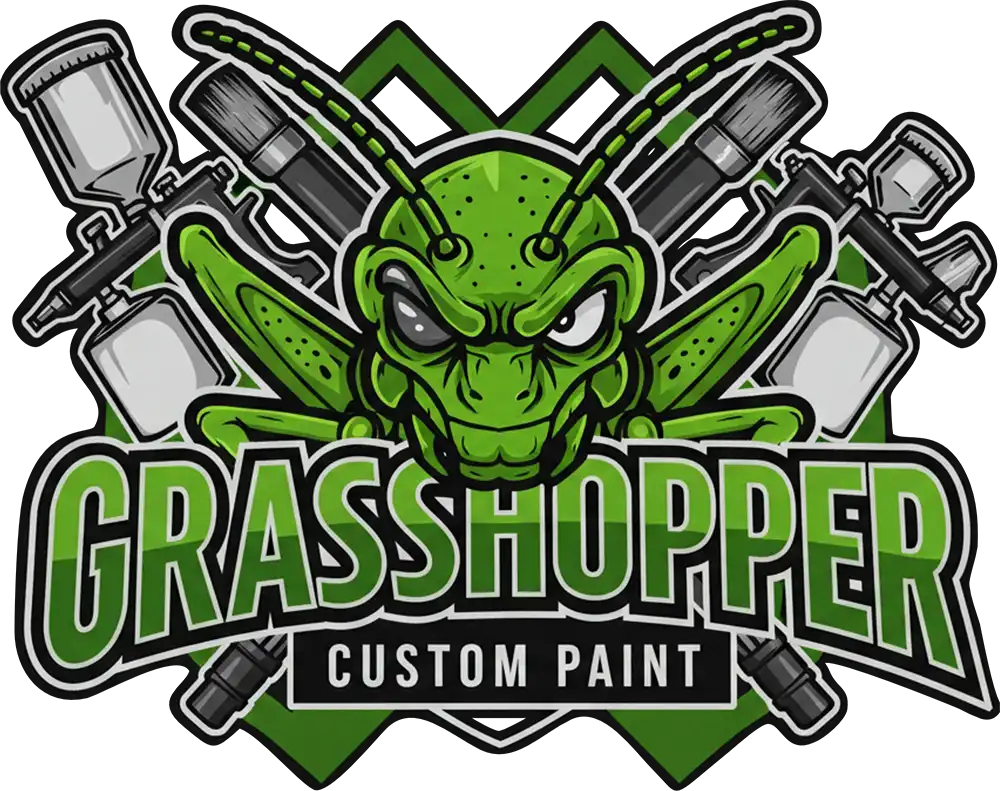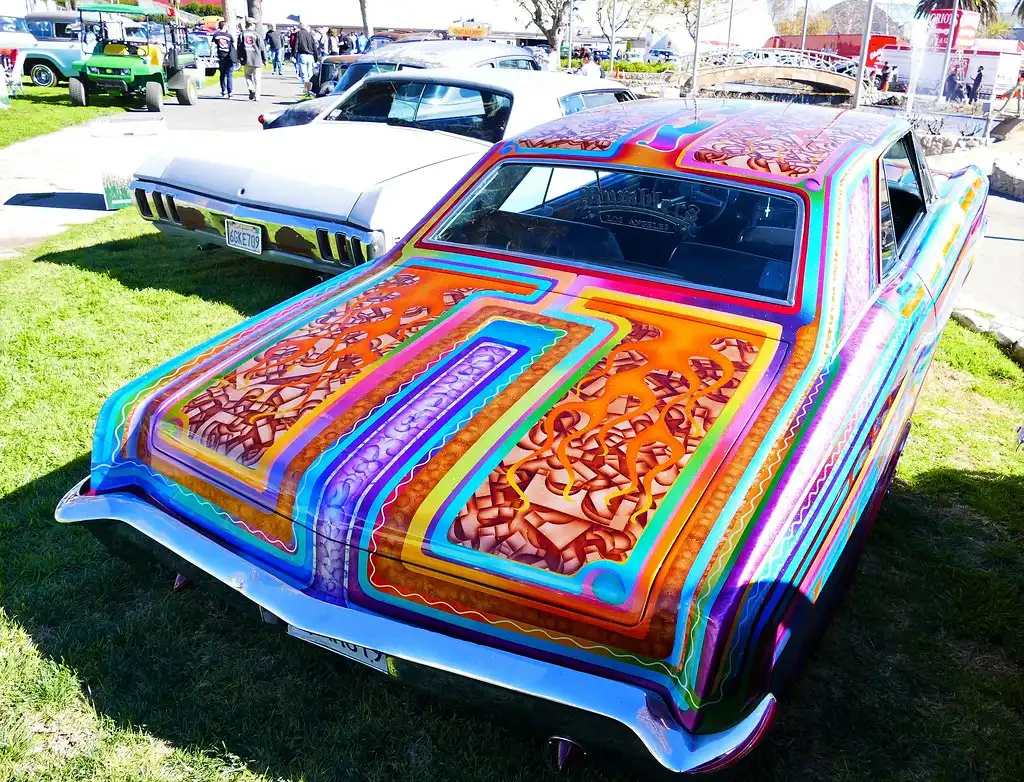A high-quality custom paint job can transform your vehicle, giving it a unique look that reflects your personality, style, or brand. But achieving that flawless, stunning finish doesn’t happen by accident—it requires meticulous planning, precision, and skilled craftsmanship. Whether you’re revamping your classic car, upgrading your motorcycle, or giving your truck a new look, understanding what goes into a high-quality custom paint job can help you appreciate the art and expertise behind it.
In this blog, we’ll break down the key steps involved in creating a high-quality custom paint job and what you can expect when you choose to invest in this transformative service.
1. Initial Consultation and Design Planning
Before any paint is applied, a high-quality custom paint job starts with a thorough consultation and design planning. This is where you’ll discuss your vision with the painter, including the type of finish, colors, and any design elements you want to incorporate.
-
Understanding Your Vision: A skilled custom painter will take the time to understand what you’re looking for—whether it’s a bold, eye-catching look or something subtle and elegant. They’ll help guide you through color options, patterns, and finishes (matte, gloss, metallic, etc.).
-
Design Mockups: If your design involves intricate graphics, airbrushing, or special effects, the painter may create a digital or physical mockup to give you a visual idea of what the finished product will look like. This ensures you’re on the same page before the work begins.
-
Material and Technique Discussion: The painter will also advise you on the best materials and techniques to achieve the look and durability you’re after. This may include selecting a premium paint brand, clear coats, and specialty products for added protection.
Tip: Take your time during this stage to ensure your vision is clear and that the painter fully understands your expectations.
2. Prepping the Surface
Proper surface preparation is key to achieving a high-quality paint job. The cleaner and smoother the surface, the better the final result will be. This step involves several crucial tasks:
-
Cleaning: The car is thoroughly washed to remove dirt, grease, and contaminants that could affect the paint adhesion. This step ensures the surface is free of any debris before starting the sanding process.
-
Sanding: Sanding is one of the most critical steps in a custom paint job. It smooths out imperfections, removes old paint, and provides a clean, uniform surface for the new paint to adhere to. Depending on the current state of the vehicle’s paint, this may involve multiple stages of sanding using different grit levels.
-
Bodywork and Repair: If there are any dents, scratches, or imperfections, these are addressed at this stage. A skilled painter will fill and smooth over these imperfections, ensuring a flawless surface before painting begins.
-
Masking: The vehicle is carefully masked to protect areas that shouldn’t be painted, such as windows, trim, tires, and the interior. This prevents overspray and ensures that only the intended areas receive the custom paint.
Tip: Proper surface preparation is crucial for a long-lasting, high-quality paint job. Skipping this step can result in poor adhesion, bubbling, or peeling paint down the road.
3. Choosing the Right Paint and Primer
The paint and primer used in a custom paint job are integral to both the look and longevity of the finish. Choosing the right materials ensures vibrant color, durability, and a smooth, long-lasting surface.
-
High-Quality Paint: Custom paint jobs typically use high-end automotive paints that offer better coverage, durability, and color consistency. Whether you choose a standard color or a custom mix, the quality of the paint is key to achieving a professional finish.
-
Primer: Primer is a crucial step in the painting process. It helps the paint bond to the surface, improves the paint’s durability, and enhances the color’s vibrancy. A high-quality primer ensures that the paint adheres properly and that the finish is smooth and consistent.
-
Clear Coat: After the color is applied, a clear coat is often used to protect the paint and give it a glossy, shiny finish. This layer helps prevent damage from UV rays, dirt, and other environmental factors. It also adds depth and shine to the color.
Tip: Work closely with your custom painter to select the best paint and primer for your specific needs, including the type of vehicle, the environment it will be exposed to, and the look you want to achieve.
4. Spraying and Application
This is the stage where the magic happens. After the prep work is complete, the painter carefully applies the paint in several layers, ensuring an even and flawless finish.
-
Layering: The painter will apply the paint in several thin layers rather than one thick coat. This method helps avoid drips, streaks, or uneven areas. Each layer is allowed to dry before the next is applied, ensuring an even, smooth surface.
-
Precision and Attention to Detail: If your design includes special graphics, stripes, or intricate patterns, the painter will carefully mask off sections of the vehicle to ensure that the paint is applied with precision. For complex designs, airbrushing or other techniques may be used.
-
Drying Time: Each layer of paint needs time to properly cure before the next layer is added. Patience is key during this process to ensure the paint bonds correctly and achieves a high-quality finish.
Tip: The more layers applied, the deeper and more vibrant the color will appear. While it may take extra time, multiple layers ensure a rich and durable finish.
5. Finishing Touches and Curing
Once the paint has been applied and dried, the final finishing touches are added to complete the custom paint job.
-
Polishing and Buffing: After the clear coat is applied, the paint is polished to remove any imperfections, smooth out the surface, and restore shine. Buffing helps bring out the depth and clarity of the paint and gives the finish a high-gloss appearance.
-
Final Inspection: A high-quality custom paint job undergoes a thorough inspection to ensure there are no defects, uneven spots, or imperfections. The painter will look over every inch of the vehicle to ensure everything is flawless.
-
Curing: After polishing, the paint must fully cure. While the paint may look dry to the touch, curing time is essential to allow the paint to harden properly. Curing times can vary, but the process ensures the paint’s durability and longevity.
Tip: Allow the vehicle to fully cure before washing or exposing it to harsh conditions. This ensures the paint job sets properly and lasts longer.
Conclusion
A high-quality custom paint job is a meticulous process that requires skill, precision, and attention to detail. From the initial design planning and surface preparation to the careful application of paint and the final curing process, every step plays a crucial role in achieving a flawless finish. Whether you’re looking to make a statement with vibrant colors, intricate designs, or simply want to give your vehicle a fresh new look, investing in a custom paint job can give your car, truck, or motorcycle a one-of-a-kind appearance that stands out from the crowd.

